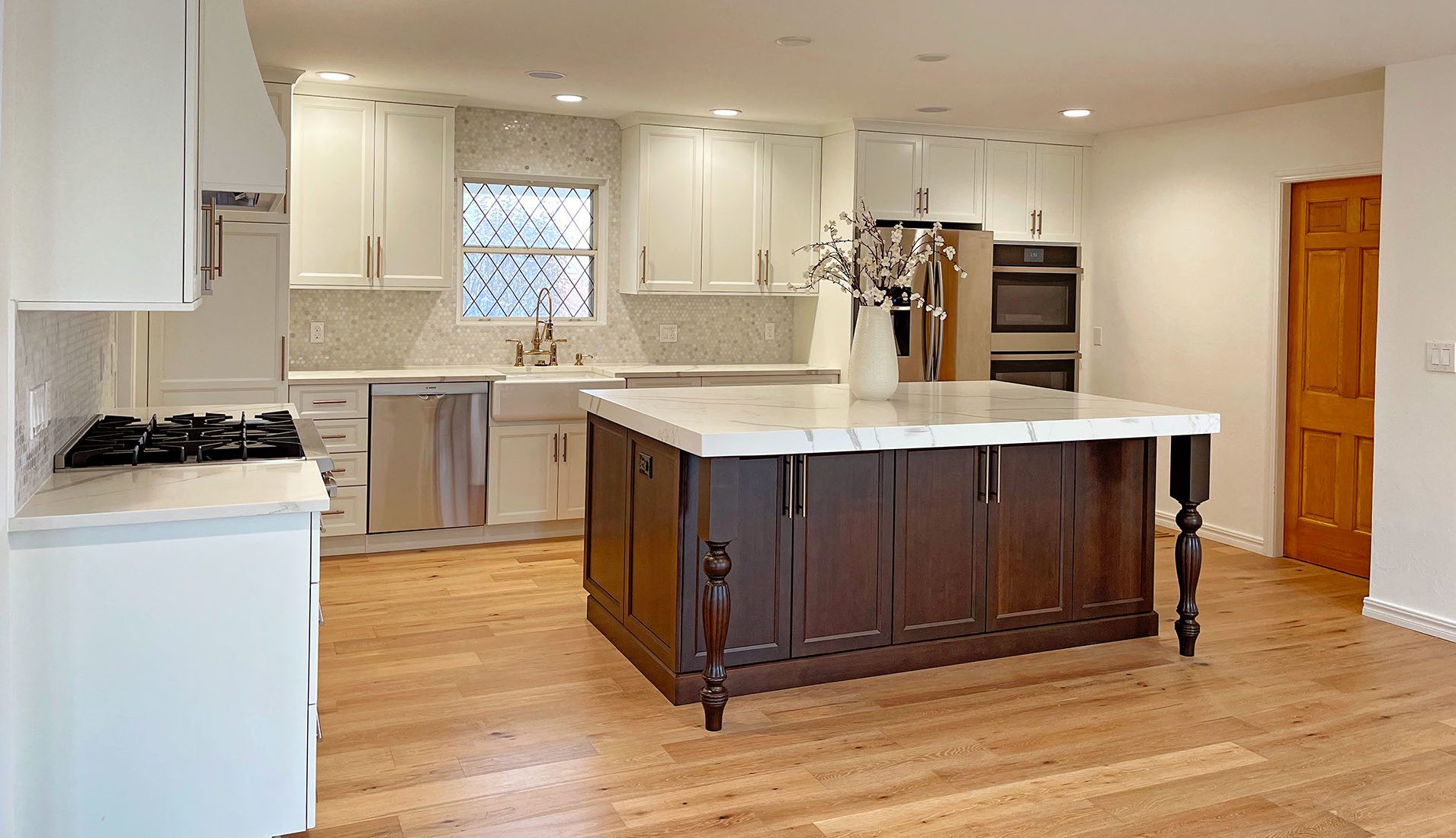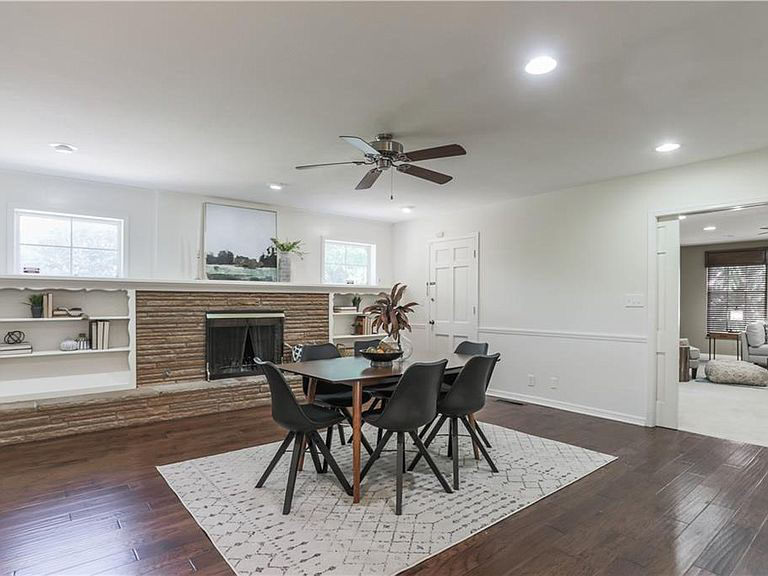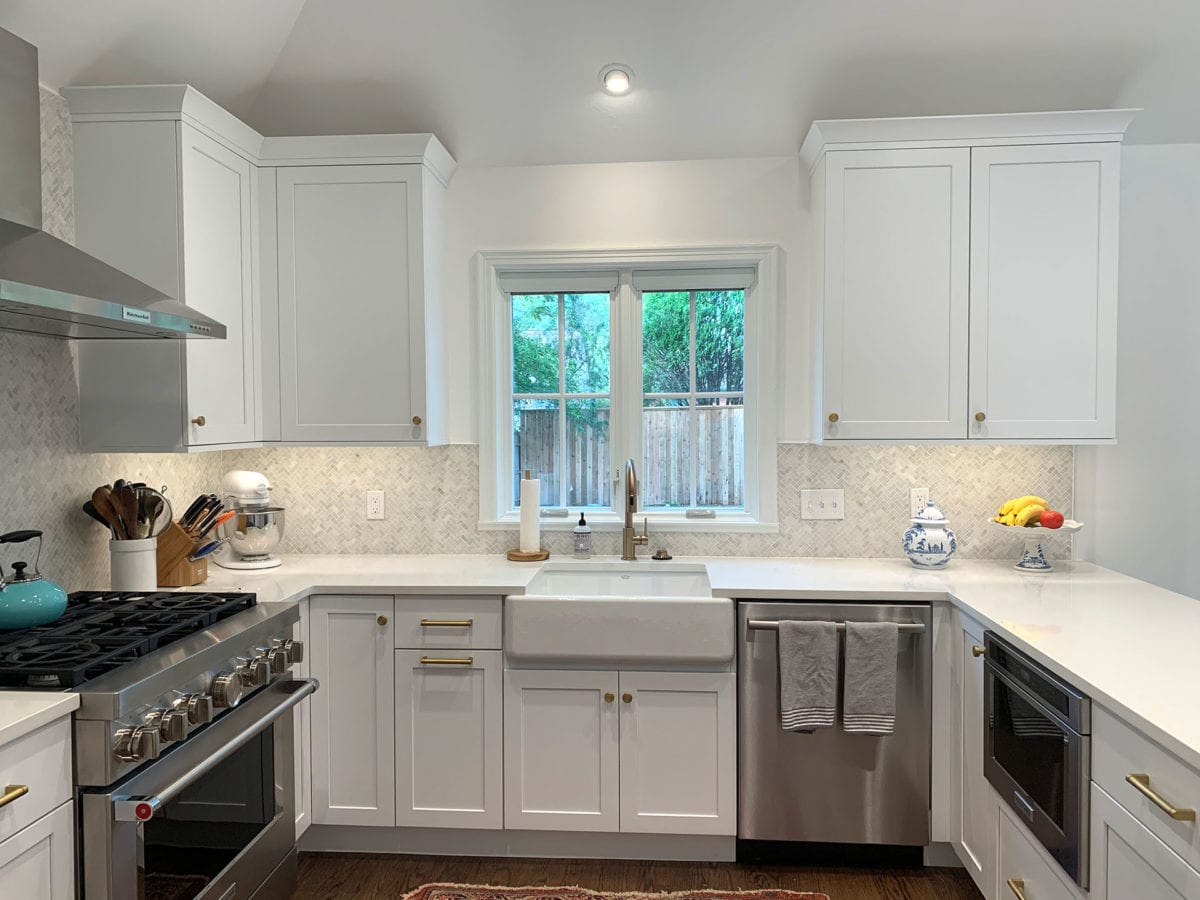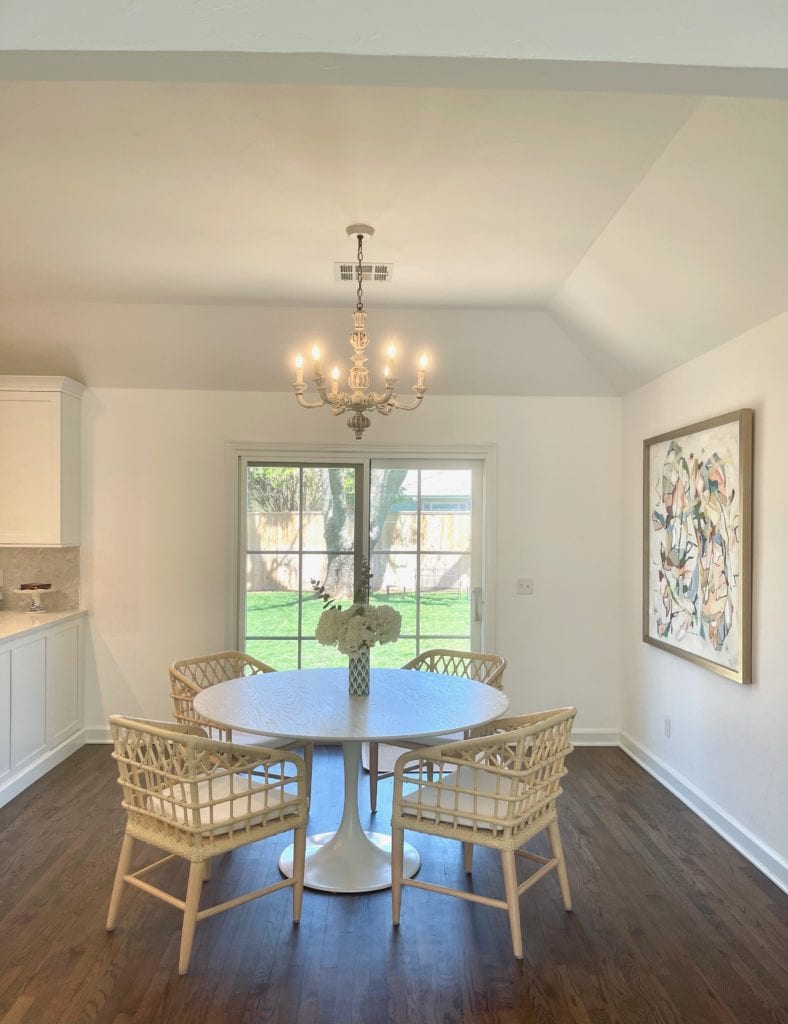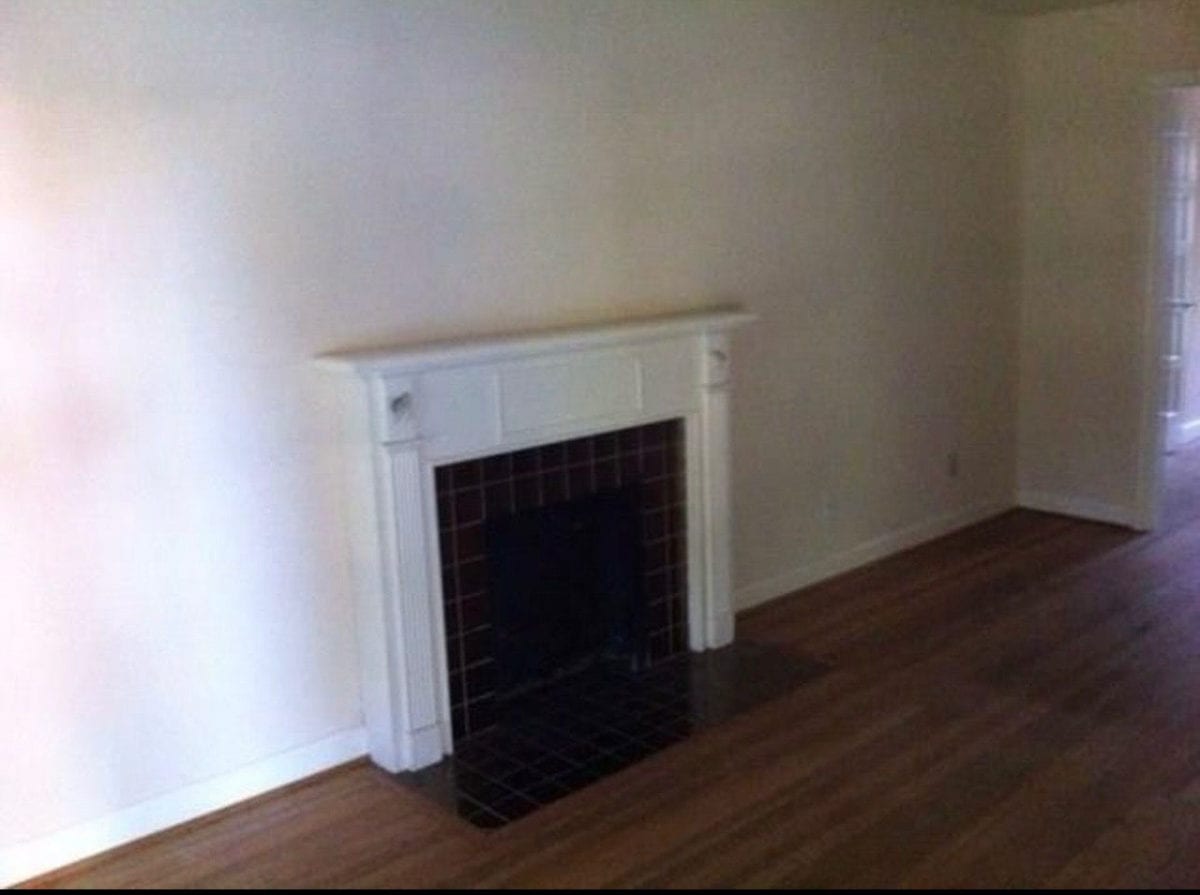Before You Start
Before the first hammer swing of a home remodeling project, one of the first things to decide is whether to stay in the house during the construction period, says Kent Hoffman, owner of Kent Hoffman Construction in OKC. That, of course, depends partly on the size of the project, but there are other considerations.
If the kitchen is involved, “and it’s a younger family that relies on the kitchen a great deal, they need to move out,” says Hoffman. “If no children are involved, it really depends on how much you can stand.”
A large remodeling project can be dangerous to live with, Hoffman says, with paint fumes, open wiring and other hazards. House preparation is part of his contract.
“There’s lots of things to do,” he says. “They should remove everything in the work area before a contractor shows up. To close off heating and air to the work areas, we use a zipper door system.”
Photos courtesy Kent Hoffman Construction
Smart Renovations
Hoffman, with 45 years of experience in the business, says kitchens are the best home remodeling investment. Master suites come next.
“And now the world has shifted, so a home office is good,” he says.
Kurt Barron, owner of Barron and McClary General Contractors in Tulsa, says outdoor upgrades are also popular right now.
“People are building pergolas, which is an outside structure that you can put furniture under, out of the sun, and maybe an outdoor kitchen to extend the living area, or an outdoor fireplace,” says Barron. “On the inside, we are doing a ton of baths and kitchens. We are also removing structural walls to open things up.”
Barron says it’s common for his clients, as they mature, to add an extra bedroom or suite, not just because of the pandemic.
“It’s a selling point to have an existing area where you can move a child coming back from college, or an aging parent,” he says.
Painted kitchen cabinets are also gaining popularity these days, says Tania Cartwright, interior design and lighting specialist in the Broken Arrow branch of Ferguson Bath, Kitchen and Lighting Gallery.
“You can do all white, or I like a mix of white on the uppers, light countertops and dark or medium colors on the lowers,” says Cartwright.
And, she says, “freestanding tubs are still big, big, big,” as are gadgets in the shower, such as rain heads and body sprays.
Setting Realistic Expectations
People about to embark on a remodeling project should be honest with themselves about their ability to make myriad decisions, says Barron. Some people don’t have a lot of knowledge about tile, countertops and other building materials and find it difficult to make choices.
If such decisions are a problem, “we will bring a designer in to help them,” he says. “Projects can be fun, or they can be a pain in the rear.”
Budgeting is another area where realistic expectations are necessary.
“In my world of high-end custom work, budgets are tricky until the final selections are made,” says Hoffman. “Often, the decisions are not all made up front.”
The age of the home can also be an important consideration.
“We never know what we are going to encounter and what we have to upgrade for city codes, and to bring it up to acceptable standards,” says Hoffman. “Sometimes, wiring and old plumbing are buried in the walls. We need time to fix those things that we didn’t know about.”
Barron says he once had a real estate license, and he can advise people as to whether it’s a good idea for them to upgrade now in
order to sell a house while the real estate market is hot.
“They need to remember that they have to have another house to go to,” he says.
Photos courtesy Kent Hoffman Construction
Common Mistakes to Avoid
Accepting the lowest bid on your project “is generally a disaster,” says Hoffman, especially when talking about the high-end remodels he specializes in. “The low bidder is often incapable of delivering a super high-end product,” he says.
Another mistake when it comes to home renovation is having an inadequate plan, he advises.
“The planning stage is the most important part of a successful job,” he says. “We are not designers, but we like to be involved with that because there are ways to save the customer, through value engineering.”
Home renovators can also save themselves headaches by being realistic about budgets and timelines, and by vetting potential contractors.
“We provide a budget summary that tells them where they are spending their money,” says Barron. “That’s so important, to give them the breakdowns, to show them the subcontractors bids. We are known for our accounting because we are transparent.”
And the most important thing, Barron says, “is to hire a contractor with experience.”
Psychological Stressors
There’s no doubt about it – embarking on a renovation project with a partner will be stressful. Couples would do well to set some ground rules, says Cartwright.
“Understand that you are probably not going to agree on everything,” she says.
Each person should be allowed to have a few things they won’t budge on, but should be willing to compromise on others, she says. And sometimes, the price tag is the deciding factor.
No matter what, couples should remember: “It’s just a house,” says Cartwright. “It’s not worth ruining a relationship.”
Jessica Teal, showroom manager for Expressions Home Gallery in OKC, says it’s important to be pragmatic about the budget and timeline to avoid arguments down the road.
“Particularly post-2020, the price of things like lumber and the time frame to get things ordered and delivered to you has grown exponentially,” she says. “You can still renovate and stay on budget, but you should be honest with yourself and any tradespeople when doing so.”
Weekly meetings with the contractor are a good idea, says Hoffman.
“I tell them we have some boxing gloves out in the car,” he says with a laugh. “If you need them, we will leave until you figure this out.”
Where to Budget and Splurge
Contractors and suppliers can help home renovators decide where it’s important to put their money.
“Don’t try to economize and give up quality,” says Teal. “High-quality building materials, plumbing fixtures and appliances last longer and save you money down the road when you don’t need to replace.”
Floor coverings can be a place to tighten the budget, says Barron.
“For bathrooms and kitchens, they are coming up with so many good porcelain tiles that are so close to looking like limestone and marble,” he says. “I know more about tile than I ever have in my life, because they are coming up with really fun tiles. You can get top-of-the-line for less money.”
Energy-efficiency can be a good investment, says Hoffman, and that includes heating and air, roofing, thermal windows and smart-house devices.
“You have to do the very best with things that are behind the walls,” he says. “Surfaces can always be changed.”
Finding the Right Schedule
If your home remodeling project is substantial and you begin with a solid completion date in mind, “you need to have the expectation it will not be fully finished,” by that date, says Cartwright. “If it’s painting and changing faucets, you can do it. But even four or five months down the road, a big renovation might not be ready.”
Between the pandemic and the construction frenzy fueled by low interest rates, “there are delays with certain materials, such as plumbing fixtures and appliances,” says Hoffman. “Some appliances that have been ordered for many, many months are still not available. There are slowdowns in manufacturing due to parts shortages.”
The weather can also affect the schedule, says Barron.
“I’m pretty much a fanatic, once I issue a schedule,” he says. “But generally, I would suggest people allow a bit more time, especially since COVID, when it might take three weeks to get a door.”






















